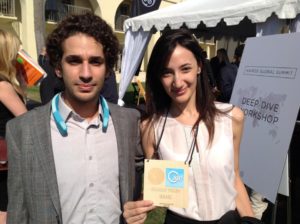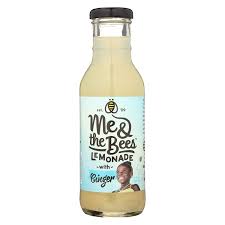Carolyn Rafaelian is the creator of the successful jewelry company, Alex and Ani. Fo r Carolyn, her idea came around the age of thirty when she returned to Rhode Island with her husband and two eldest daughters. Carolyn grew up on Rhode Island with her family, and her father was in the jewelry industry making brooches and earrings. Carolyn has memories of working as punishment in the factory her father owned, so she credits her childhood with sparking her passion.
r Carolyn, her idea came around the age of thirty when she returned to Rhode Island with her husband and two eldest daughters. Carolyn grew up on Rhode Island with her family, and her father was in the jewelry industry making brooches and earrings. Carolyn has memories of working as punishment in the factory her father owned, so she credits her childhood with sparking her passion.
Carolyn decided to start Alex and Ani because she was unimpressed with the costume jewelry industry and her father’s company was struggling to keep up with cheap jewelry coming from China. The brand started off with simple wire bracelets and hoop earrings, but Carolyn wanted more. That was when she came up with an idea that would allow design to be applied to the bracelets. In 2004, Carolyn patented the “Alex and Ani 14-gauge expandable wire bangle”. This new design allowed for the bangle to hold more beads and charms for better designs. Carolyn saw great success with this design when it was first launched because “it tattoos your body without the tattoos:” people could express themselves with these bangles.
But Carolyn went further by adding another unique feature to her bracelets. She wanted her bracelets to encourage positive thinking and reduce negative energy. Now her bracelets have charms, cards, and the blessings of a priest and shaman that are specific to creating positive energy while you wear them. Brent Cleaveland says, ‘”They don’t really sell jewelry. They sell positive energy. The bracelet is just the vehicle.”‘
Alex and Ani is turning over 10 million dollars a year, and Carolyn has seen major growth in her company. Her unique modification to an established market shows her entrepreneurial creativity. Carolyn found a niche, and she was able to create more than a piece of jewelry. Carolyn created a story and an experience in her jewelry, which makes her customers feel connected to her products. She didn’t create jewelry, but she added to the market by changing the purpose of bracelets. It was inspiring to learn her process of creating more than just a bangle.





 sion was film. His mother and Anu Aunty were adamant that he should think about how making meaningless videos would risk everything. With fear of shaming his mother and failing in the film industry, Agarwal decided to pursue engineering. Unfortunately, he failed in this industry because the material left him uninterested and wanting more. After graduating with an engineering degree, Agarwal decided to take a different approach, not thinking instead of thinking, because he already failed. As a result, he co-founded a company that sells school and college merchandise in India at the age of twenty-two with his friend Rohn Malhotra. Alma Mater began at zero, but grew to be an impressive million dollar company working with over 400 schools and colleges across India. The idea began when they had a desire to donate to their high school. Charitable donations quickly developed into selling merchandise as a way for schools to receive more funding.
sion was film. His mother and Anu Aunty were adamant that he should think about how making meaningless videos would risk everything. With fear of shaming his mother and failing in the film industry, Agarwal decided to pursue engineering. Unfortunately, he failed in this industry because the material left him uninterested and wanting more. After graduating with an engineering degree, Agarwal decided to take a different approach, not thinking instead of thinking, because he already failed. As a result, he co-founded a company that sells school and college merchandise in India at the age of twenty-two with his friend Rohn Malhotra. Alma Mater began at zero, but grew to be an impressive million dollar company working with over 400 schools and colleges across India. The idea began when they had a desire to donate to their high school. Charitable donations quickly developed into selling merchandise as a way for schools to receive more funding.